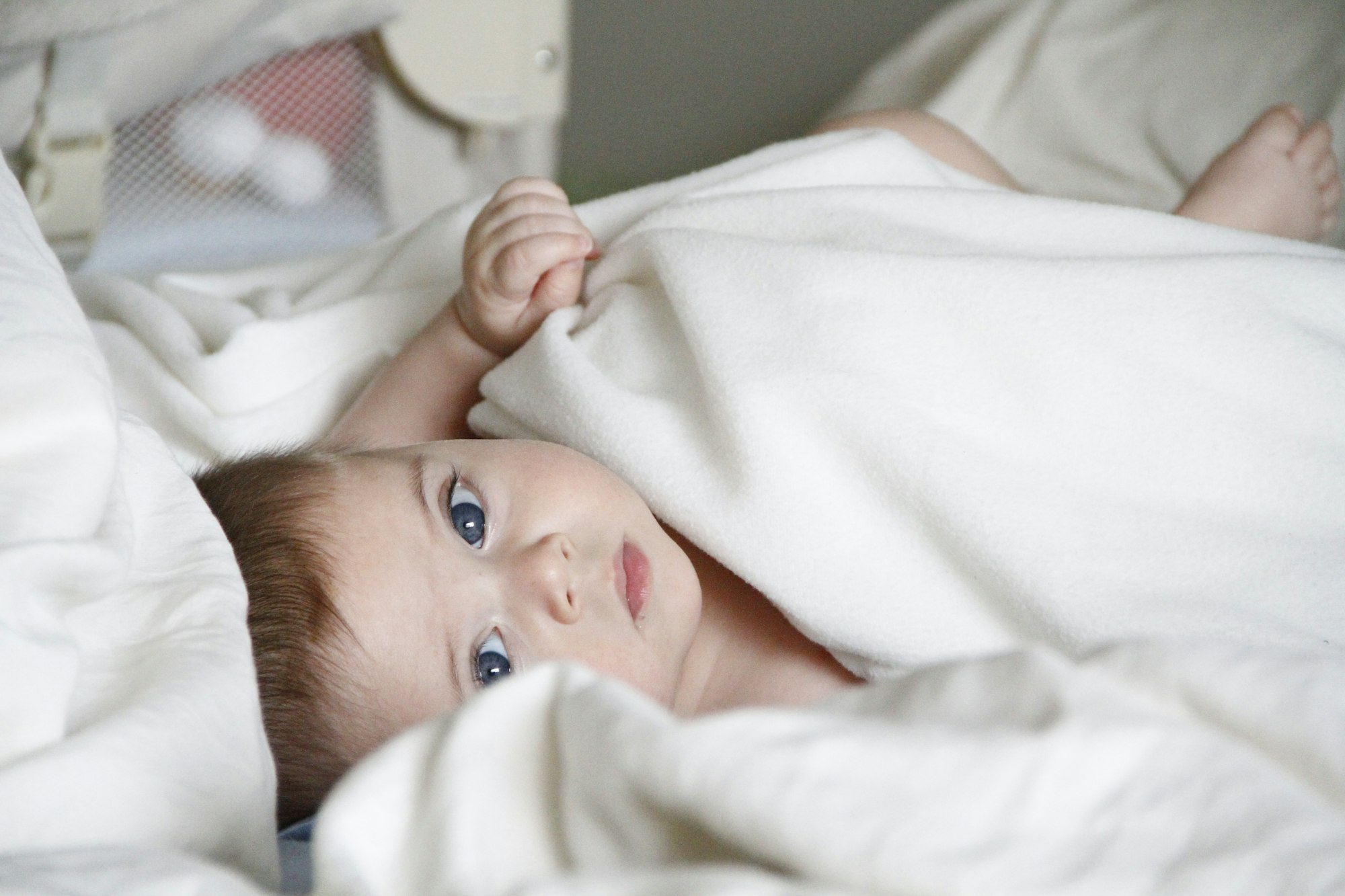Breastfeeding is a beautiful experience, but when symptoms like pain, burning, or itching arise, thrush might be the hidden cause behind the discomfort.
Let’s break it down together: what thrush actually is, how to spot it in yourself or your baby, what really causes it, and how to treat it effectively (yes, naturally too). We’ll also look at how to avoid getting stuck in the frustrating loop of recurring infections.
What Is Thrush in Breastfeeding?
Thrush is a yeast infection, usually caused by Candida albicans. Yeast is a natural part of our digestive systems and skin flora, but when it grows out of balance, it can lead to an infection. Candida thrives in warm, moist environments—making your nipples (and your baby’s mouth) a perfect target.
While it’s a common diagnosis when breastfeeding becomes painful, it’s not the only reason for nipple discomfort. That’s why getting the right diagnosis matters. You might hear it called nipple thrush, breast yeast, or candida infection. Whatever the label, thrush can affect both mom and baby and is often passed back and forth while breastfeeding.
Thrush Symptoms in You & Baby while Breastfeeding
In you (the breastfeeding parent):
- Burning or stinging nipple pain, often worse after feeds
- Itchy, flaky, shiny or overly pink nipples
- Tiny blisters or white spots on the nipple or areola
- Sharp, shooting pain deep in the breast or radiating to the back and arms
- Pain that doesn’t improve even with good latch
- Decrease in milk supply
- Cracked nipples or red, inflamed rash on the breast
- Vaginal yeast infection (itching, discharge, irritation)
- Sores at the corners of the mouth (angular cheilitis)
- Rash in moist areas like underarms or groin
In your baby:
- White patches in the mouth or on the tongue that don’t rub off easily
- White-coated tongue lasting beyond the newborn stage
- Fussiness at the breast or during feeds
- Diaper rash that doesn’t go away easily
- Excessive gas or signs of tummy discomfort
If you or your baby has these signs—especially if you both do—there’s a good chance thrush is involved.
But Wait—Is It Definitely Thrush?
Here’s something not everyone tells you: many cases of nipple pain aren’t caused by thrush while breastfeeding. Other common culprits include:
- A shallow latch
- Friction or trauma from feeding or pumping
- Nipple eczema or dermatitis
- Vasospasm (a burning, stabbing pain due to blood vessel tightening)
- Milk blebs or blocked ducts
Sometimes even experienced health professionals jump straight to a thrush diagnosis without ruling these out. If antifungal treatments aren’t working within a week or so, it’s time to explore other causes—ideally with the help of a lactation consultant.
What Causes Thrush While Breastfeeding?
Yeast overgrowth can happen for a variety of reasons:
- Recent antibiotic use (for you or baby)
- Cracked or bleeding nipples (which allow entry for fungi)
- Warm, damp environments—like wet breast pads or sweaty bras
- Using plastic-lined nursing pads that block airflow
- Baby has oral thrush or a persistent diaper rash
- A weakened immune system
- Underlying conditions like diabetes or anemia
- History of vaginal yeast infections
- Long-term steroid use
- Oral contraceptives containing estrogen
- Pacifier use, especially in daycare settings
Thrush thrives when the natural balance of good and bad microbes is disturbed. This is why it’s especially common after a course of antibiotics.
Can You Keep Breastfeeding If You Have Thrush?
Yes, and you absolutely should if you’re able. Continuing to breastfeed helps maintain your milk supply and soothes your baby. Just remember: both mom and baby need to be treated—even if only one shows symptoms—or the infection may just ping-pong back and forth.
Natural Remedies for Thrush While Breastfeeding
If you’re hoping to avoid—or complement—medications, there are natural remedies that many moms swear by. Some are supported by research, others by tradition or anecdotal evidence. Always check with your healthcare provider, especially if your baby is very young.
1. Baking soda rinse
Mix 1 teaspoon of baking soda in 1 cup of warm, boiled (and then cooled) water. Use it to rinse nipples after feeds or apply inside baby’s mouth with a clean cloth.
2. Coconut oil or olive oil
Both have antifungal properties. Apply gently to nipples after each feed. Can also be applied to baby’s mouth using a clean finger or swab.
3. Apple cider vinegar solution
Mix 1 tablespoon with 1 cup of water. Dab onto nipples after feeding (only if the skin isn’t cracked). Can also be used to rinse baby’s bottom if there’s a yeast-related diaper rash.
4. Probiotics and fermented foods
Support your gut and immune system with probiotic-rich foods (yogurt, kefir, sauerkraut) or supplements. Helps rebalance flora after antibiotics.
5. Medihoney or medical-grade honey
Can soothe irritation and fight a thrush infection while breastfeeding. Apply sparingly and avoid direct contact with baby’s mouth unless advised by a healthcare provider.
6. Garlic supplements
A potent natural antifungal. Mom can take 4–6 capsules of odorless garlic daily during infection and for a week or two afterward.

7. Echinacea
Boosts immunity. Use under the guidance of a healthcare provider if breastfeeding.
8. Gentian violet
Apply to nipples and baby’s mouth once daily for up to 3 days. Very effective—but stains everything purple, so use with caution.
9. Grapefruit seed extract
Take 250 mg orally, three times a day. May also be diluted and used as a topical wash on nipples.
When Medication Is Needed
If symptoms persist, worsen, talk to your healthcare provider about taking thrush medication while breastfeeding. You may need:
- Miconazole or clotrimazole cream for your nipples
- Oral antifungal drops or gel like Nystatin for your baby
- Fluconazole oral tablets for deeper or persistent infections
Treat both you and your baby simultaneously—even if only one of you has visible symptoms.
What About Pumping and Milk Storage During Thrush?
Thrush doesn’t make your milk unsafe, so don’t stop feeding or pumping. But because yeast can survive freezing, consider:
Tips for storing and handling expressed milk:
- Label milk expressed during a thrush outbreak
- Scald milk (heat until tiny bubbles form around the edges, then cool)—if you want to kill yeast before storage
- Use fresh milk first and dilute thawed milk from the infection period with new milk
Breast milk also contains antifungal properties and supports baby’s gut health, so even if yeast is present, it will not cause harm. Always consult your IBCLC or doctor if you’re unsure.
Preventing Recurrence of Thrush While Breastfeeding
Once you’re symptom-free, here’s how to reduce the chances of thrush making a comeback:
- Let nipples air-dry after feeds
- Replace nursing pads as soon as they get damp
- Avoid plastic-lined breast pads
- Wash bras, pump parts, towels, and baby items in hot water
- Boil pacifiers, bottles, teething toys, etc., daily during treatment
- Wear breathable, cotton bras and underwear
- Rinse affected areas with vinegar-water solution (1:1 ratio) if prone to yeast
- Avoid high-sugar and high-yeast foods (e.g., bread, dried fruit, alcohol, soda)
- Rest, eat well, and stay hydrated

When to See a Professional
Call your doctor, midwife, or lactation consultant if:
- You’re in severe or worsening pain
- Your baby refuses to feed
- You notice red streaks, fever, or signs of mastitis
- Symptoms persist more than a week with home treatment
- Thrush keeps coming back
Also: If symptoms don’t improve with antifungal treatment, you might be dealing with a bacterial infection like staph, which requires antibiotics. Staph and thrush can feel similar, so a proper diagnosis is essential.
The Bottom Line About Thrush and Breastfeeding
Thrush is a common—and frustrating—breastfeeding challenge, but it’s absolutely manageable. With a mix of natural remedies, good hygiene, and (when needed) medication, most parents can get back to comfortable, confident breastfeeding.
The key? Act early, treat both of you, and stay consistent. You’ve got this, mom.
References
- The LLL article also emphasizes caution: many symptoms attributed to “nipple/breast thrush” may have other causes (poor latch, trauma, etc).
- Use of antibiotics (mother or baby) → disrupts normal flora → Candida can overgrow. nhs.uk
- Baby’s oral thrush or diaper rash may seed the mother’s breast, or vice versa (cross transmission). Treatment often must be simultaneous. Healthline
- Expressed milk: according to KellyMom, freezing does not kill yeast; but fresh/refrigerated/frozen milk can still be used safely during treatment. KellyMom
- Other sources mention probiotics (for mother after antibiotics) and diet: limit sugar/refined carbs, use yogurt. University of Rochester Medical Center


